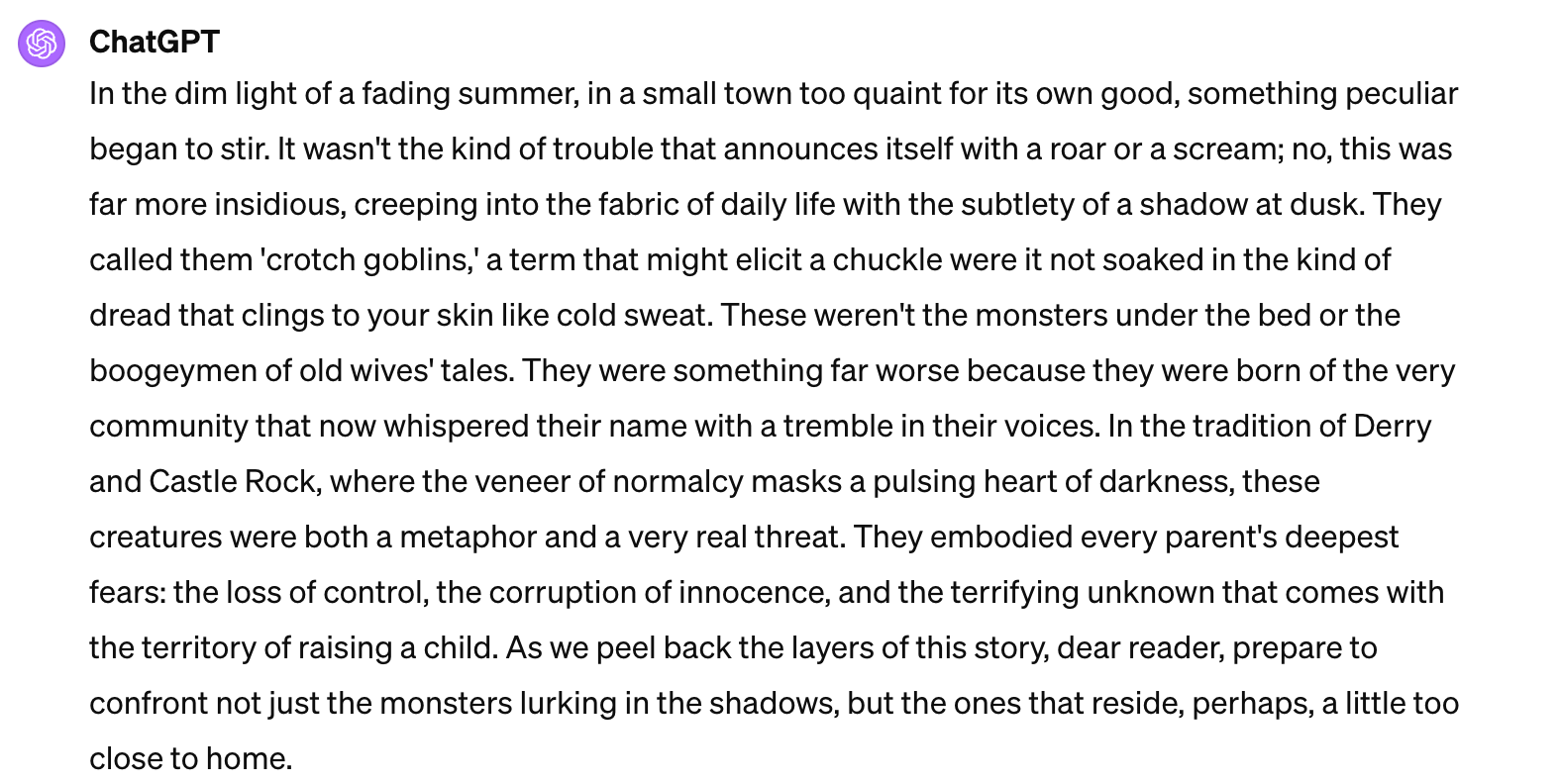Generative AI has emerged as a powerful (set of?) tool(s), transforming the way we create, share, and interact with information. This transformation is not without its complexities, as it nudges us closer to the edge of the uncanny valley—a concept where the more human-like a non-human entity becomes, the more its subtle imperfections cause discomfort. (I told y’all I am gonna write about the uncanny valley so soon.)
S’ wanyways, in writing, this phenomenon manifests in a unique tension between the artificial and the authentic.
As generative AI becomes more accessible, the floodgates of content creation have swung wide open. What once required hours of human labor can now be produced in minutes, leading to an unprecedented surge in the volume of content available. This ease of creation has (ostensibly) democratized content production, allowing voices from all corners of the globe to be heard. But as our digital spaces turn into something out of Hoarders, discerning readers are beginning to crave something more—authenticity.
In other words, we need to be serving realness.
Readers are intuitive. Somewhere, subconsciously, I believe we can sense when the words before us lack the warmth of human touch, no matter how eloquently those words are strung together. Authentic writing, with its inherent imperfections and idiosyncrasies, carries the weight of human experience—something no algorithm can fully replicate. Wanna bet? Try to make ChatGPT sound like Stephen King (whose guide/memor remains one of the top 5 writing books I’ve ever read.)


BUT, this does not spell the end for generative AI in writing. I for one, am THRILLED a computer program cannot emulate another writer’s true voice (rather it just seems to cherry pick details from what is known about the author and his or her subject matter.) On the contrary, it marks the beginning of a new chapter, one Chris Long has dubbed the Cognitive Era. Our collective work in this area has unearthed some earth shattering shifts and others that seem to mirror phases humans have gone through before…even recently.
The history of SEO writing serves as a pertinent example. The early days of SEO saw a deluge of keyword-stuffed articles prioritizing search engine visibility over reader engagement. Over time, however, superior content—writing that resonated on a human level—began to rise above the noise. The same evolution is poised to happen with AI-generated content. As the novelty wears off, the craving for genuine human connection and storytelling becomes more pronounced.
This realization brings us to a pivotal moment in the intersection of technology and creativity. Generative AI’s true potential does not lie in its ability to produce content en masse but in its capacity to empower those who could not fill-in-the-blank before.
It offers tools for those who might not have the means to express their ideas through traditional avenues—be it due to a lack of skill, resources, or confidence. From the aspiring writer who struggles with dyslexia to the visionary unable to code their groundbreaking app, AI can serve as a bridge between latent potential and tangible impact. (I have another scenario-laden article coming out about this actually.)
Far from rendering human creativity obsolete, AI can amplify it, providing a platform for voices, ideas, music, art, concepts…. that might otherwise go unheard, unseen, unsung. It encourages a more inclusive discourse, where diversity of thought and experience enriches the collective human narrative. This, in turn, can lead to a more empathetic, understanding, and connected world.
In the end, the proliferation of generative AI in writing and social media is not a threat but an invitation—an invitation to explore new horizons of creativity, to collaborate with the machines we have created, and to reimagine the boundaries of what is possible. At least, that’s the ideal anyway.




